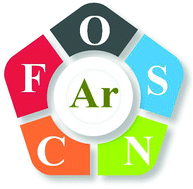Metal-catalysed C–Het (F, O, S, N) and C–C bond arylation
Abstract
The formation of C–aryl bonds has been the focus of intensive research over the last decades for the construction of complex molecules from simple, readily available feedstocks. Traditionally, these strategies involve the coupling of organohalides (I, Br, Cl) with organometallic reagents (Mg, Zn, B, Si, Sn,…) such as Kumada–Corriu, Negishi, Suzuki–Miyaura, Hiyama and Sonogashira cross-couplings. More recently, alternative methods have provided access to these products by reactions with less reactive C–Het (F, O, S, N) and C–C bonds. Compared to traditional methods, the direct cleavage and arylation of these chemical bonds, the essential link in accessible feedstocks, has become increasingly important from the viewpoint of step-economy and functional-group compatibility. This comprehensive review aims to outline the development and advances of this topic, which was organized into (1) C–F bond arylation, (2) C–O bond arylation, (3) C–S bond arylation, (4) C–N bond arylation, and (5) C–C bond arylation. Substantial attention has been paid to the strategies and mechanistic investigations. We hope that this review can trigger chemists to discover more efficient methodologies to access arylation products by cleavage of these C–Het and C–C bonds.



 Please wait while we load your content...
Please wait while we load your content...